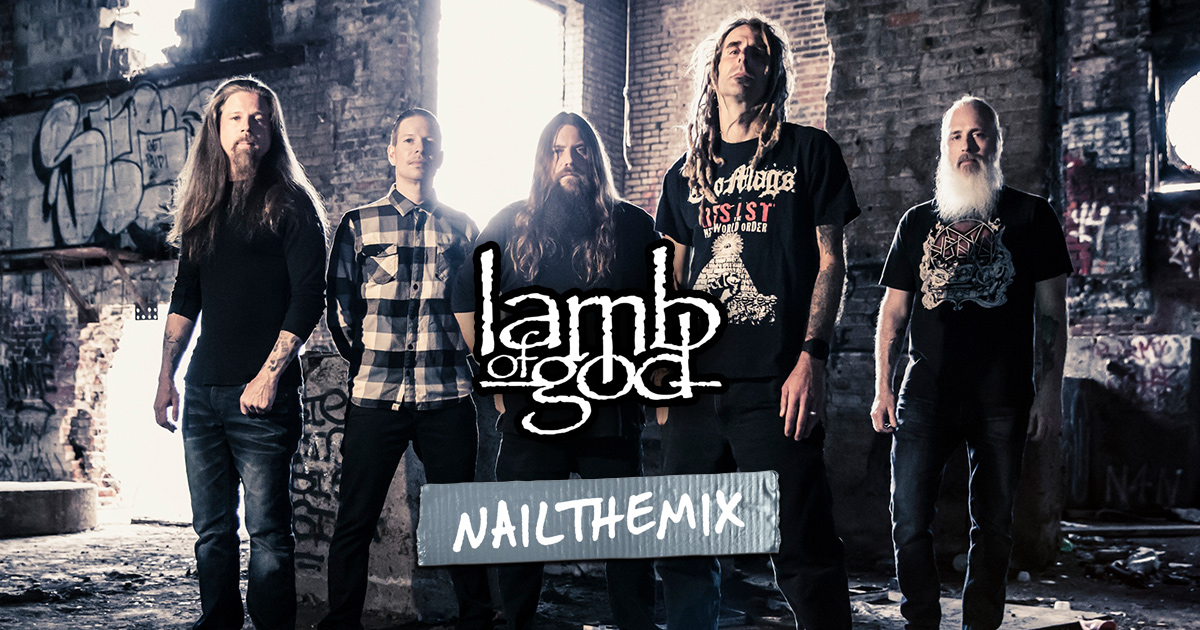
Mike Stringer: Crafting Spiritbox’s Guitar Identity
Nail The Mix Staff
Mike Stringer. If you're into modern metal, that name, and his band Spiritbox, have likely been on your radar – and for damn good reason. Their meteoric rise isn't just luck; it's built on a distinctive sound where ethereal melodies collide with crushing, technical heaviness. And a massive part of that sonic fingerprint? Stringer's innovative guitar work and songwriting.
Spiritbox's Sonic Boom: The Stringer Factor
Spiritbox didn’t just knock on the door of the metal scene; they kicked it wide open, seemingly overnight. But that rapid ascent is backed by a sound that’s both instantly recognizable and deeply nuanced. Courtney LaPlante’s incredible vocal range is a huge part, sure, but the sonic tapestry she weaves her magic over? That’s largely orchestrated by Mike Stringer. We’re talking more than just killer riffs; it’s the atmospheric textures, the rhythmic complexity, and the foundational songwriting that makes Spiritbox, well, Spiritbox.
Decoding the Rig: Mike Stringer's Guitar Alchemy
So, how does he conjure those signature tones that are both face-meltingly heavy and beautifully atmospheric? It’s a combination of smart gear choices, an understanding of low-tuned dynamics, and a modern approach to guitar processing.
The Arsenal: Guitars, Pickups, and Low Tunings
Stringer is synonymous with modern, forward-thinking gear. You'll often see him wielding Aristides guitars, particularly their H/07, H/08, and R/07 models. These aren't just for show; the extended range of 7 and 8-string guitars is crucial for Spiritbox's signature ultra-low tunings – think Drop F# or even Drop E. This requires serious string tension and stability, which Aristides delivers.
Coupled with these are Fishman Fluence pickups, often his signature Tosin Abasi models or the Moderns. Why Fluence? Unmatched clarity even under heavy gain, versatile voicings perfect for switching between crushing rhythms and ambient cleans, and they’re remarkably noise-free – essential when you’re dealing with high-gain tones and intricate parts. To wrangle those low tunings, expect custom, heavy string gauges to maintain clarity and playing feel.
Amp Sims & Effects: The Modern Powerhouse
When it comes to amplification, Stringer embraces the digital realm. He’s heavily associated with Neural DSP plugins, and you can bet a significant portion of Spiritbox’s recorded tones come from their powerful amp modelers. Think Archetype: Gojira for those percussive, articulate chugs, Archetype: Nolly for its tight, mix-ready aggression, or even the Fortin Cali Suite for that high-gain boutique feel. This approach offers incredible versatility and, crucially, consistency from studio to stage.
On the pedal front, it’s about enhancement and texture. You'll likely find:
- Overdrives: Something like a Fortin Grind or a Precision Drive to tighten up the low end and add attack before hitting the amp sim.
- Ambient Effects: For those signature spacious clean sections and lead flourishes, pedals like the Strymon BigSky (reverb) and Timeline (delay) are industry standards for a reason.
- Pitch Shifters: A DigiTech Whammy or Drop pedal is invaluable for instant tuning changes or creating unique octave/harmony effects.
Playing Style: More Than Just Djent
Mike’s playing is a masterclass in modern metal guitar. Yes, there are elements of djent – the syncopated, polyrhythmic chugs that hit you in the chest (that "thump" technique is key). But it’s far from one-dimensional. His riffs often carry a strong melodic contour, and he seamlessly transitions between brutal heaviness and hauntingly beautiful clean passages.
His lead work isn’t about fretboard olympics; it’s about serving the song. Expect atmospheric lines, tasteful use of slides and bends, and delay/reverb trails that add layers of emotion. The clean sections are just as important, creating dynamic shifts and allowing Courtney’s vocals to soar before the heaviness crashes back in. This often involves intricate arpeggios, volume swells, and carefully dialed-in effects to build soundscapes.
In-the-Box Tone Sculpting
Getting those tones to sit in a dense Spiritbox mix requires surgical precision. It’s not just about gain; it’s about careful shaping.
- Strategic EQ: With those low tunings, managing the low-end is paramount. This means high-passing to remove unnecessary sub frequencies, finding the sweet spot for punch (often around 80-120Hz), and carefully carving out any muddiness (typically in the 200-500Hz range). Equally important is taming high-end fizz without losing aggression – think surgical cuts in the 5kHz-10kHz range. Want to dive deeper into these techniques? Check out our guide on how to EQ metal guitar.
- Smart Compression: While high-gain tones are naturally compressed, additional compression can ensure every note is articulate and punchy, especially for complex rhythmic parts. It can also help glue multiple guitar tracks together.
- Layering and Panning: Spiritbox guitars sound HUGE. This often involves multiple layers – perhaps two or four rhythm tracks panned hard left and right, sometimes with additional layers providing texture or highlighting specific melodic lines. The interplay between these layers, and how they’re EQ'd and balanced, is key to their massive sound.
The Songwriting Blueprint: Stringer's Structures
Beyond the tones and techniques, Mike Stringer is a core songwriter in Spiritbox. His guitar parts aren’t just riffs dropped into a song; they are the song's foundation. He has an incredible knack for structuring tracks that ebb and flow, building tension with sparse, atmospheric passages before exploding into earth-shattering heaviness.
This dynamic interplay is a Spiritbox hallmark. He understands how to use guitar to create hooks – not just vocal hooks, but instrumental lines that stick in your head. His writing provides the perfect canvas for Courtney LaPlante to deliver her diverse vocal performances, ensuring the music and vocals work in perfect, often contrasting, harmony.
See It In Action: Learning From The Pros
Hearing about these techniques is one thing, but seeing how these massive, modern metal tones are dialed in and mixed by the pros who craft them is another. While you might not be in the room with Stringer, you can get the next best thing.
Diving deep into how professional songs are constructed, mixed, and polished is a game-changer. Dissecting professional multitracks is an unparalleled learning experience, giving you a taste of what it’s like to learn from the source.
Craft Your Own Signature Sound
Mike Stringer’s approach to guitar and songwriting is a huge reason why Spiritbox resonates so powerfully. It’s a blend of cutting-edge technology, meticulous tone-crafting, complex yet memorable riffage, and a deep understanding of song dynamics. He proves that modern metal guitar can be both punishingly heavy and incredibly nuanced.
Inspired to apply some of these concepts to your own productions? Understanding how to harness amp sims, sculpt EQs for clarity and punch, and layer guitars effectively can transform your mixes. At Nail The Mix, we provide the tools and knowledge to do just that. You can even get started by using tools modeled directly on his signature sound, such as the official Spiritbox plugin developed with his input.
Get a new set of multi-tracks every month from a world-class artist, a livestream with the producer who mixed it, 100+ tutorials, our exclusive plugins and more
Get Started for $1




